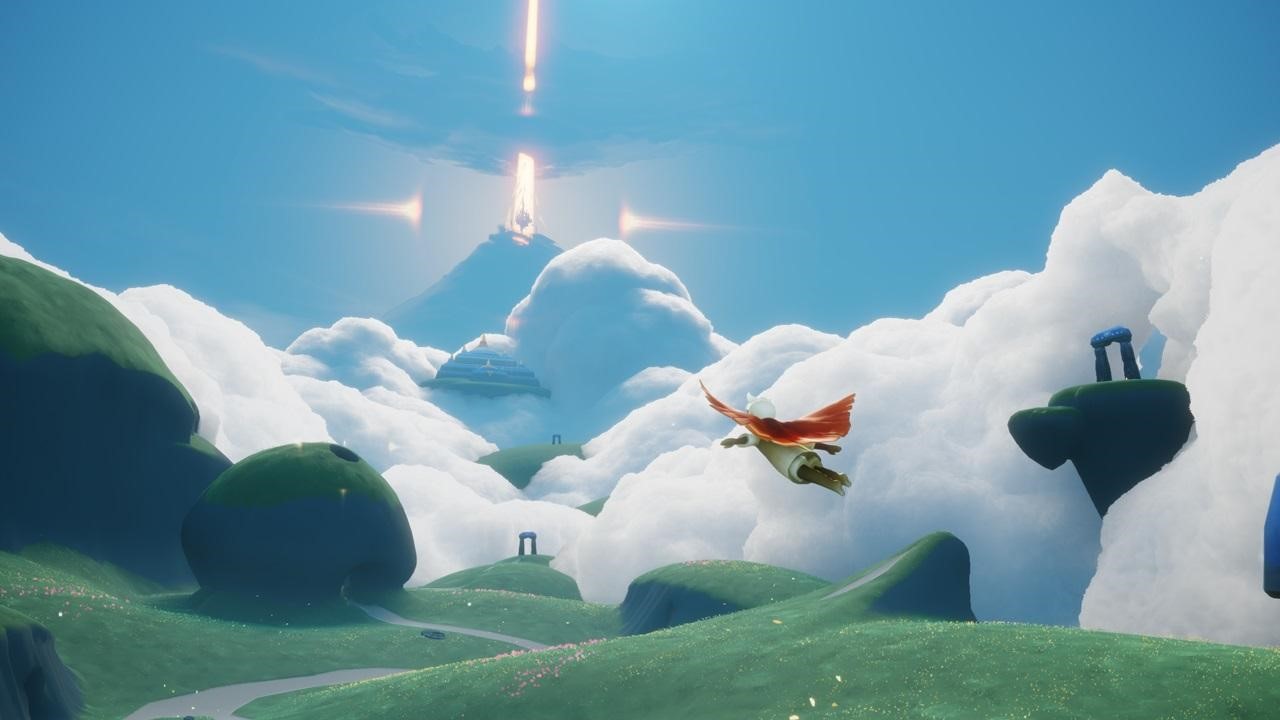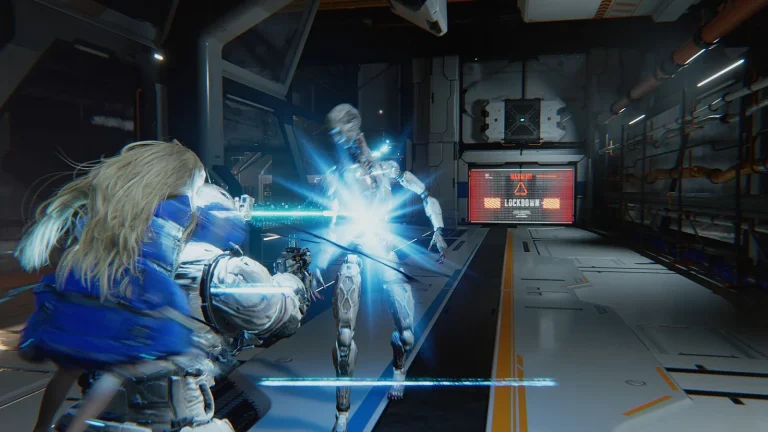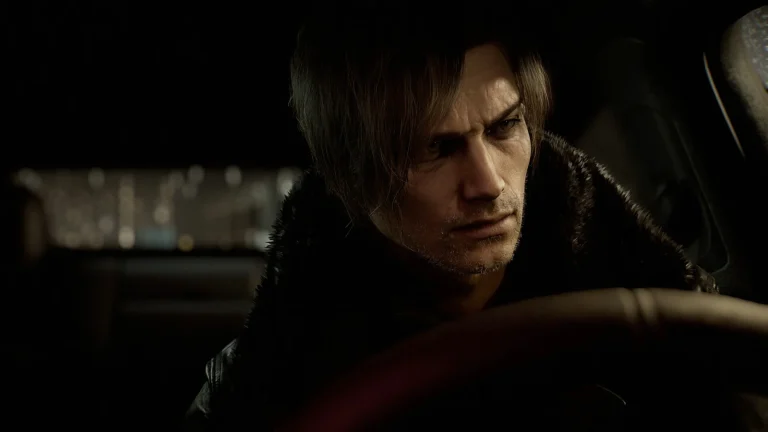Publication date of the original Japanese article: 2020-03-07 11:00 (JST)
Translated by. Braden Noyes
Indie developer thatgamecompany, creator of Flower and Journey, is now managing their most recent title, Sky: Children of the Light. This unique, free-to-play adventure game takes place in the skies above and explores the bonds between people. With its beautiful visuals, the awe-inspiring soundtrack, and a narrative able to resonate with players’ inner emotions, this game most certainly has everything you would expect from a thatgamecompany title.
While the studio behind Sky: Children of Light is based in Los Angeles in the United States, their team includes a couple Japanese staff members as well. In addition to Mr. Ritsu Mizutani, who we introduced during the first half of this story, we also had a chance to ask Ms. Reika Yoshino about her contributions to the game.
Mr. Mizutani:
Once again, I am Ritsu Mizutani, and I am in charge of sound effect production as well as overall sound design, engineering, and implementation. I also worked with another Japanese member of the company to localize the game into Japanese before it launched.
Sky: Children of the Light (herein called Sky) was actually in development for over 7 years. About halfway through this long development period, there was a drastic change in the game’s design direction, going from a more linear story experience to one which puts a heavy focus on communication. It was around this time that I joined the team.
Ms. Yoshino:
Hi, I’m Reika Yoshino, a 3D artist in charge of the game’s scenery and backgrounds. I joined this project about 2 years ago, which is actually relatively recent in the game’s overall development, and had a hand in many of the game’s later stages. I’m currently working on a few too many different jobs. Haha. I originally joined the company as a 3D artist, but I also worked on other parts of the game such as the UI and clothing designs.
Sky actually has quite a large female player base, but there aren’t very many women on the development team. I think the fact that I was able to offer a woman’s perspective may have been part of the reason I ended up with more work. The team is quite small to begin with, though. For example, there’s only a single animator who created all the cutscenes, emotes, and player control motions.
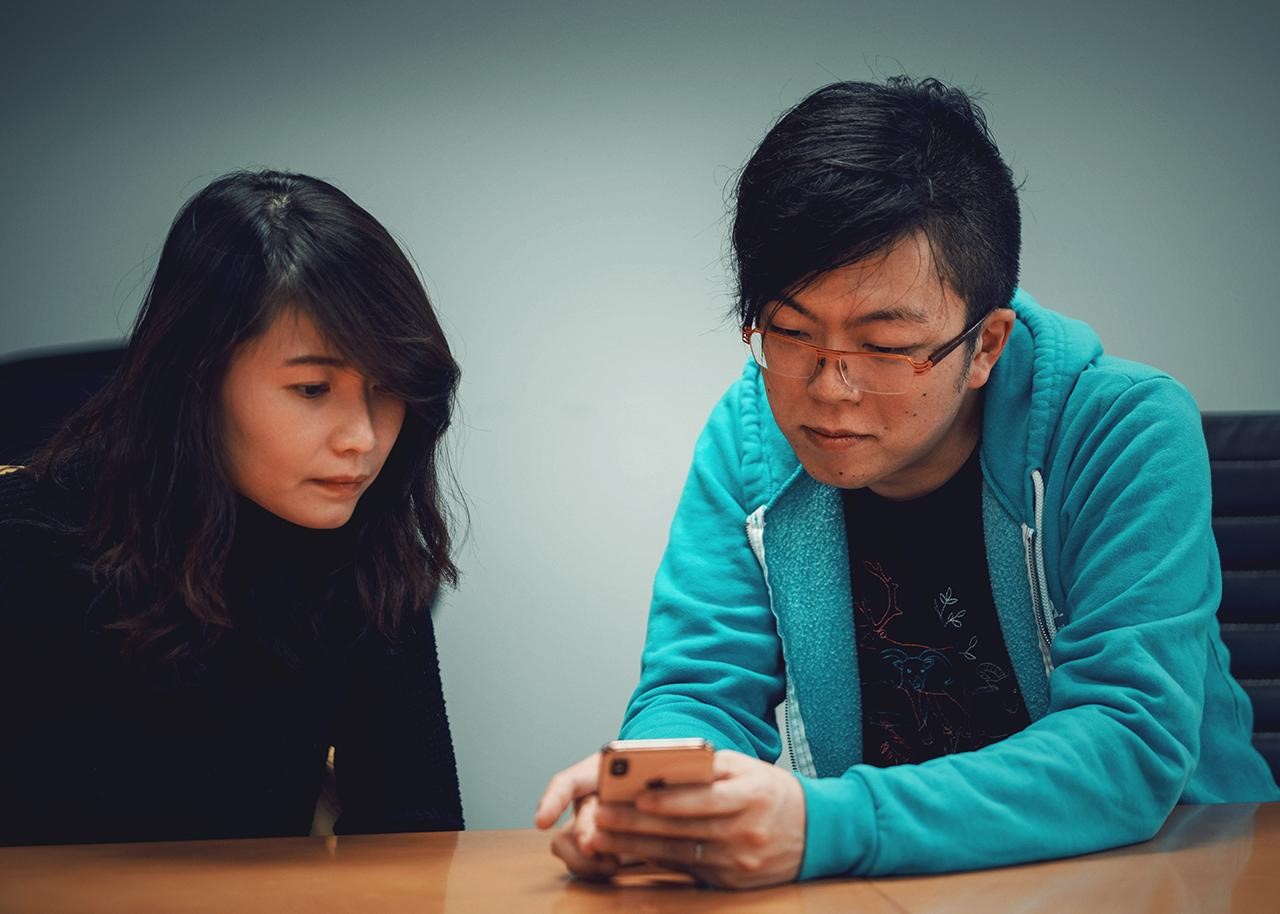
Would you give us another introduction to Sky: Children of the Light?
Mr. Mizutani:
Sky is a social adventure game created by thatgamecompany, the same studio which also developed Flower and Journey. In Sky, players take on the role of a child of light and journey across a devastated kingdom with other players as you rescue creatures, return fallen stars to their constellations, and bring hope back to the people of the kingdom.
Our goal was to bring players a visual and auditory experience that surpassed what they expect to find in a mobile game. However we also wanted to ensure that everything about the game—from the story, to the challenging gameplay that requires players to figure out ways to overcome the obstacles in their path, all the way to the paid content—was carefully thought out in order to provide the best experience possible.
I think the enjoyable way in which this game’s design is able to so naturally guide the player into sympathizing with and showing compassion for others, as well as aiding you in guessing what they are thinking is quite unique. Even without relying on the game’s chat function, players are able to play together and come to a sort of mutual understanding through waves and other gestures, all while maintaining a kind of distance.
It’s like that feeling you got as a kid when you were out playing happily at the park with someone you didn’t even know until the sun went down and you both had to go home for dinner. There was no obligation to exchange contact information; just a kind of hope that you might run into them again the next day. That’s the feeling I get when I play.
Thank you. On that note, would you tell us what points you focused on the most when creating the audio for Sky: Children of the Light?
Mr. Mizutani:
Broadly speaking, the role of a game’s audio was thought to be to evoke a player’s emotions and feelings and convey necessary information through the use of music and sound effects. However, Sky’s ultimate goal was to provide players with shared emotional experiences. In order to achieve this, the director made it clear that I was to think very carefully about precisely which emotions I wanted the player to feel when they heard each and every sound within the game.
For example, one of the most symbolic actions you can take in Sky is holding hands with another player. I was told to create a sound for this action that would evoke a sense of warmth. But what kind of sound creates a sense of warmth? I worried over this question for quite some time. I mean, I couldn’t very well use the sound of a crackling fire to represent the warmth a person feels when holding hands.
After much consideration, I finally decided to go with the body temperature one feels through touch, represented by the sound of a person’s beating heart. However, this isn’t a sound people are normally aware of. Even if you were to listen carefully to someone standing still in a quiet location, the sound of a heart beating is only barely audible. And this is only one example. Each and every sound in the world of Sky had to be created with careful intent and purpose. This project has been filled with a lot of trial and error that went into getting them just right.
I also had to pay particular attention in making sure none of the sounds felt jarring or out of place, unless that was their actual purpose. When producing music, it is a given that you must pay special attention to make sure each and every instrument is properly tuned. However, I am personally dissatisfied with how often blatantly dissonant sounds make it past review and into the final version of a game. This becomes even more noticeable with speakers that are only able to produce a narrow range of sounds, such as those in smartphones. It’s very easy for all the different sounds to get mixed together, turning into a jumble of noises which you can no longer distinguish from one another.
One of the main features of the sound in Sky is how the clearly-defined sound effects and the key of the music are synchronized in real time to form a harmonious, consonant sound. While synchronizing sound effects with music is relatively easy in single player games, Sky more closely resembles an MMO. In a non-linear game such as this, where you can’t control the type or timing of the sounds made by all the players at once, getting the sounds to work well together was a maddening venture. It took an incredible amount of work, but I believe I managed to pull it off.
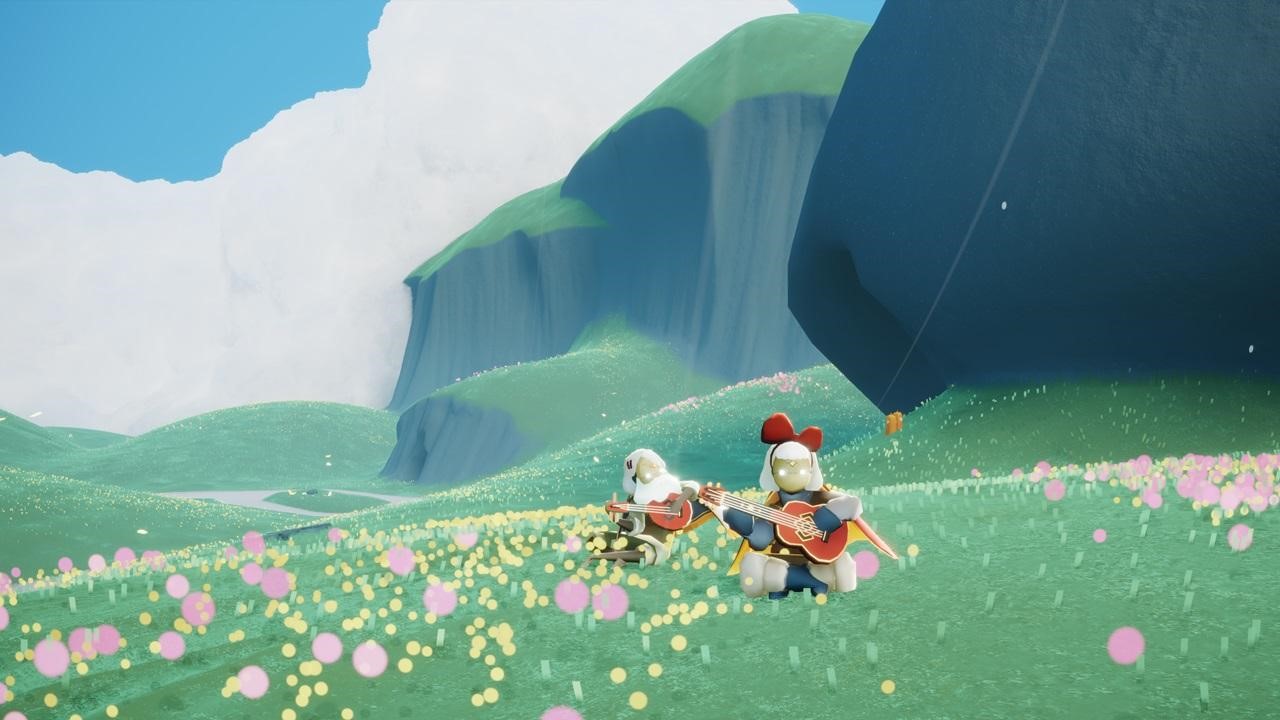
The sound of the wind in this game is so comforting.
Mr. Mizutani:
I think that is due to the amount of dedication and passion the engineering team put into the design of the touch panel navigation. You can really see how much work they put in by how smoothly your character follows the path the player makes with their finger. It’s amazing. There is a solidly-written formula built into the game which captures the movements the player inputs into the game’s interface and translates them into visuals and sounds the player sees and hears.
With so many such parameters, the sound of the wind is set to change according to these inputs. The sound of the wind itself also consists of many layers. Just like how the sound of the wind is constantly changing in nature, we had to make sure the different layers of sound could change in complex ways in response to variables such as the player’s input, their surroundings, and the passage of time. I think this attention to detail allows for the player to feel a stronger sense of immersion. None of the sounds the player hears during the game will continue for more than brief periods of time, either. Each sound is designed with the goal of making the player want to dive deeper into the world.
It’s not just the wind, either. So many of this game’s sounds are relaxing. Does that mean you were just as detailed with many of the game’s other sounds as well?
Mr. Mizutani:
I’ve mentioned a number of things in the past, such as the use of different instruments for different areas, the cries of certain creatures, and the sound effects when the player flies through clouds, so I’m a little worried I’ve already revealed a few too many of the details behind the game’s hidden secrets. Haha. I will say this, however. There’s an enemy in the game known as the Black Dragon. It’s one of the few large enemies in the world of Sky. When creating the sound effects that play as it’s moving or when it notices the player, we used a number of elements that aren’t found anywhere else in the game.
When designing the sounds for Sky, we tried to vary the materials we used in order to help give each one meaning within the game’s story and link them to whatever it is in the game that’s creating that particular sound. This was also done in an attempt to invoke the desired emotional response from the player. I’m constantly making sure that each and every sound has a purpose within the game’s narrative.
For example, there are three main elements of the game that are all closely related: light, as a kind of life-force for the children of the stars; the spirits of the fallen stars themselves; and flames, which are similar to light in the sense that they’re a source of strength to the player. These three elements are tied together by the use of bells and chimes. So unless we put an actual chime in the game that makes sound, anything unrelated to light or flames in some way, no matter how bright and shiny it may be, isn’t allowed to have the sounds of bells or chimes associated with it.
I know this answer is starting to drag on, so I’ll just add this one last thing. There are a number of objects such as automatic door switches scattered about the world of Sky. These various remnants of a destroyed civilization are represented by synth bass tones and the sounds of sharp objects.
The Dark Dragon also generates these same sounds, scattering them about like air pollution as it moves. There are even a few sounds of scissors and kitchen knives being rubbed together that I recorded myself. Personally, I think these turned out great, but there are a lot of people who say the sounds are creepy and they don’t like hearing them. From a design perspective, I suppose that means they’re doing their job, but I still think it’s a bit sad that so many people hate them.
Was it difficult to understand what exactly the director and designers wanted you to do? I’m guessing the language barrier may have made things tough.
Mr. Mizutani:
Yes, that’s true. Whenever a new member joins the company, the rest of the team sits down with them for an entire day to bring them up to speed on things such as company philosophy, the story behind Sky, and the direction they’d like to take the game. There is a particular process which they drive into you from the very beginning. Fortunately, I’m often asked to start by trying things the way I think would work best. They then provide suggestions and feedback, and I work from there.
That sounds like proof they trust in your abilities. Was it like that from the start?
Mr. Mizutani:
At the beginning, I doubt they had the same level of confidence in me as they do now, but after joining the team, I made a number of suggestions such as how to approach the sound of the wind. My guess is that they slowly decided it would be faster to leave the first draft ideas up to me.
This game sure brings out the sounds of the environment. Even the player’s footsteps are loud. They give a strong sense of loneliness.
Mr. Mizutani:
The sound of the footsteps was something Director Jenova (*) was very particular about. Their sound was originally much softer, but I was asked to make every step sound heavier in order to express more emotion, which led to what we have now.
*Co-founder and director Jenova Chen
I get the sense that the one who creates the sounds for Sky is also a sort of director.
Mr. Mizutani:
I believe that could be said of everyone at thatgamecompany. Every object within the game has a background and a story of its own. Ideas proposed without them are quickly rejected. Nothing in this game is added without meaning.
I mentioned dissonant sounds before, but there are also other elements we paid close attention to so as not to cause discomfort to the player. One of Sky’s characteristic elements is the fact that you can’t see the names of players you become friends with. Instead, you are able to assign them names yourself.
Suppose someone I became friends with had a more aggressive name that couldn’t be changed. I’m not sure if I would like that or not. When I just want to relax and play the game, I doubt seeing a name like that would invoke positive feelings. Being able to assign other players’ names yourself will avoid these situations. These kinds of well-thought-out details, not only that of the sounds, create an environment in which you can enjoy the game without feeling uncomfortable due to uncontrollable circumstances.
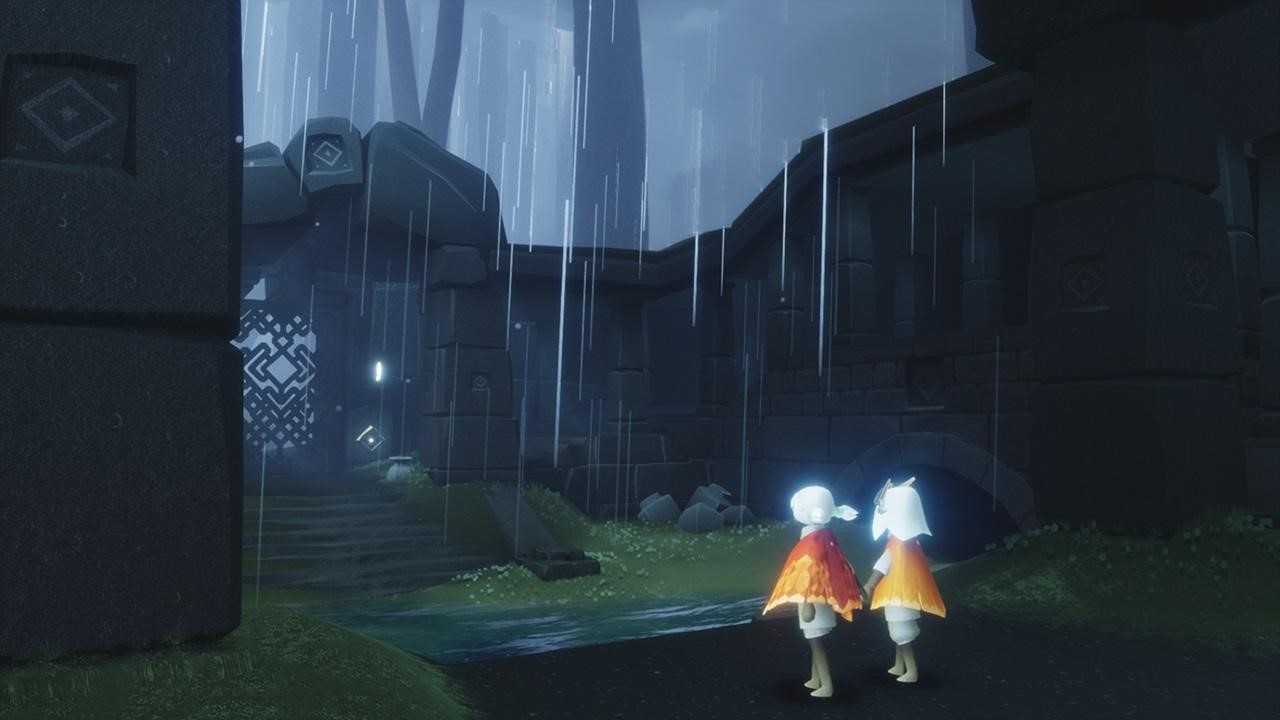
Thank you. Ms. Yoshino, what sort of things were you most focused on adding to the game as an artist?
Ms. Yoshino:
In terms of design, I’m very conscious about creating genderless cosmetic items. And even when that isn’t quite possible, I try to create art that will make boys say “How cute!” or girls say “That’s so cool!” It’s not just about gender, though. I also try to create art that is inclusive of different races as well. For example, I wanted something more than just basic hair styles. Hair is often a part of a person’s identity, so I wanted to make sure to include a wide variety of options (curly hair, for example) so people from all over the world would be able to find something that would appeal to them.
As far as the game itself goes, I spend a lot of time creating areas that are interesting enough to make players want to return to them. Most of the areas are relatively linear in design, but whenever I create a new area, I have the desire to include a number of hidden locations and detours along the way. In order to achieve this, I must first find a delicate balance between Sky’s overall worldview and the level design. The design of the finished areas may seem simple at first glance, but each one is full of the imagination and feelings of many different developers.
The management team works hard to make sure the amount of work we have to do is reasonable, while also placing priority on the quality of the content we deliver to players as opposed to mere quantity. They work very hard to ensure there is plenty of communication going on as well as to avoid slipping into a habit of assigning too much work, all to make sure the members of the art team are well motivated. I hope their efforts will help each person on the team find inspiration moving forward.
On a side note, what do you find most appealing about the sounds of Sky?
Ms. Yoshino:
When you start playing Sky, the first thing you’re presented with is sound. It begins to play even as the logo appears, followed by visuals of the sea and wind, then finally the game’s opening animation. I think one of the best parts about the game’s sound is that it makes even walking very enjoyable. In fact, I may like it even more than I do flying. Haha.
It looks like Mr. Chen’s very particular requests paid off, then!
Mr. Mizutani / Ms. Yoshino
*both laugh*
Mr. Mizutani:
Even in the areas where you can’t hear much music, your emotions change merely by walking across the various surfaces, whether it’s grass, stone, or my personal favorite, metal. It makes such a satisfying clanging sound. I really recommend playing the game with some high-quality headphones. The kinds with noise-cancelling technology make for a particularly immersive experience.
How many people are there on the team?
Mr. Mizutani:
There are about 30 of us in total, and about 20 of those are developers.
That doesn’t seem like very many to manage a 3D live-service game.
Ms. Yoshino:
We’d like a few more, that’s for sure. Haha.
Mr. Mizutani:
When we reach the point where our vision for Sky can be expanded, we plan on hiring more staff. We want to provide players with much more content, not just the seasonal events that are already in the game. We’re actually looking to fill a few positions right now, so please take a look.
About where does Japan rank in Sky as far as total number of players?
Mr. Mizutani:
At the moment, Sky has been translated into 11 languages, with people from all around the world enjoying the game. Among these, Japanese players are quite passionate, making up about the third largest group.
Ms. Yoshino:
I heard a story of a Japanese player and a Russian player becoming good friends. It warmed my heart.
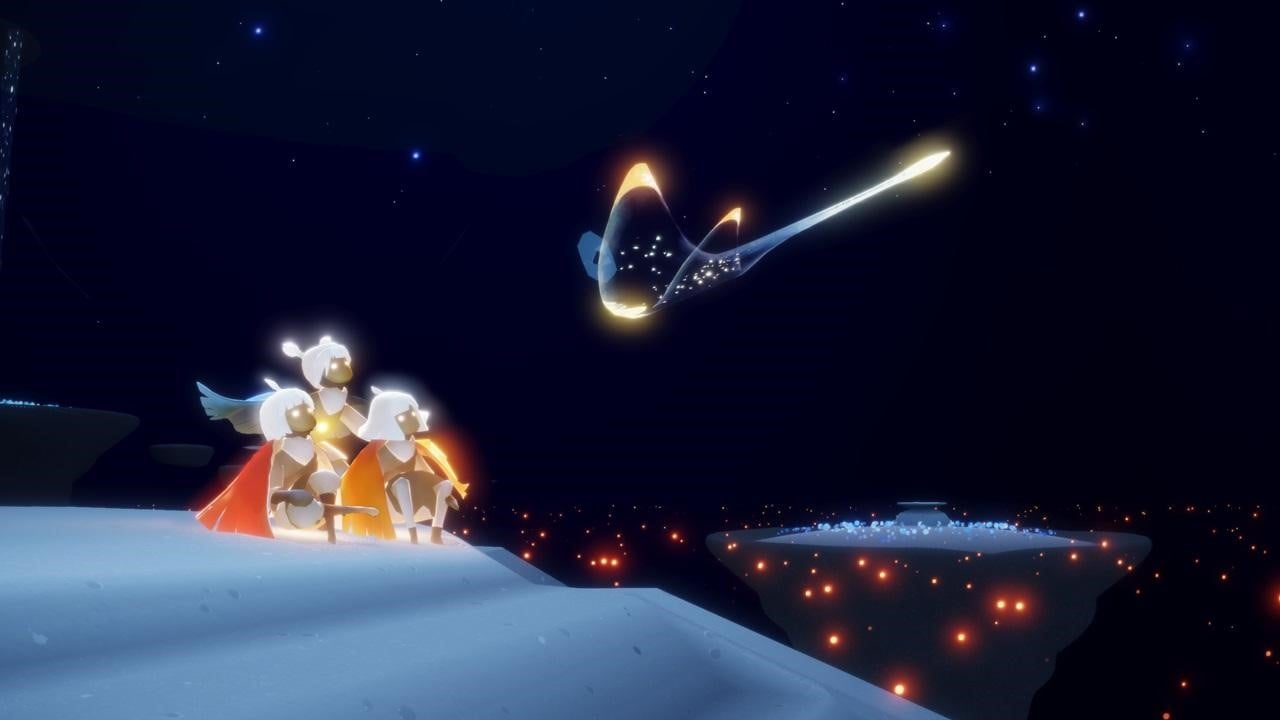
That is certainly one of Sky’s unique aspects. Your team has been updating the game for about half a year since its release now. What sorts of things can we expect to see going forward?
Mr. Mizutani:
One of our main goals right now is to get the game into the hands of more people around the world.
Ms. Yoshino:
In that sense, you might say that we’ve still only just gotten started.
Mr. Mizutani:
We’re still working very hard on versions for Android, PC, and consoles at the moment. The engineering team has actually already managed to release a version for Android in Japan.
I feel as if the real work is going to start only once we’ve been able to reach a certain number of players around the world. Once that happens, I believe we’ll be able to explore greater depths with the story so players can discover more worlds they’ve never experienced before. That’s when the real growth can begin.
Ms. Yoshino:
The game world was created to be constantly evolving, so we’re devoting ourselves to giving players from all over the world more opportunities to experience the game and discover new areas.
It seems you have quite the grand plan in place.
Mr. Mizutani:
Our vision for the game is a big one, but in order to make those visions a reality, we’re going to need the continued support of the players. Sorry for the sudden shameless plug, but we sincerely hope you will all continue to do so! Haha! I believe the expansion of this world will greatly depend on that support.
For the time being, we plan on increasing support for gateway devices as well as smoothing out the parts of the game that tend to trip up players who are just starting out. We also want to bring some new surprises to those who are already enjoying the game. These two points are what we’ll be focusing on in the near future. I hope to see even more players from Japan, as well as the rest of the world, come enjoy Sky.
Thank you both for your time.

